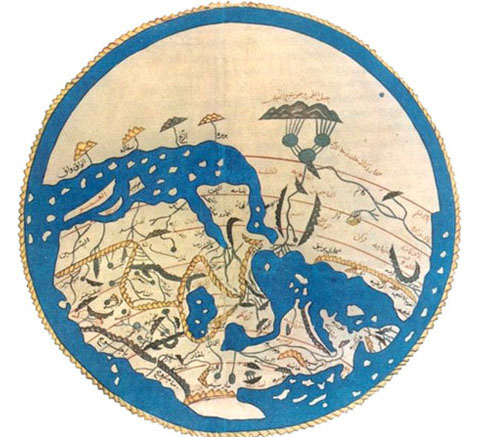Article of the Month - November 2023
“The Maghrib in Europe: Royal Slaves and Islamic Institutions in Eighteenth-Century Spain”
(Thomas Glesener: History, Aix-Marseille University
& Daniel Hershenzon: Literatures, Cultures, and Languages, University of Connecticut)
Thomas Glesener and Daniel Hershenzon, "The Maghrib in Europe: Royal Slaves and Islamic Institutions in Eighteenth-Century Spain," Past and Present 259 (2023): 77–116.
Read the article here.
Keywords: royal slaves • 18th century Spain • Cartagena (Murcia) • Ottoman Algiers • early modern Mediterranean • waqf • bayt al-mal • corporation • Muslims, Europe • legal pluralism
Abstract:
“The Maghrib in Europe: Royal Slaves and Islamic Institutions in Eighteenth-Century Spain” focuses on a “hospital-mosque” established by the royal slaves employed in the arsenal in the port city of Cartagena (Murcia), Spain. The story of the institution is one of collective action, only its protagonists were Muslim slaves who skillfully used the corporate logic of early modern Spain to transplant a number of Islamic hybrid communal institutions in Christian Spain. In addition to the hospital-mosque and cemetery, the royal slaves also established a waqf (religious endowment) and practiced the functions of Bayt al-mal (Islamic treasury), institutions common in ports cities in Mediterranean European at the time. Their history revises our understanding of Islam and slavery in eighteenth-century Spain. We argue that institutions like the Cartagena hospital-mosque shaped free and bonded Maghrebi communities and are indicative of the royal slaves’ collective action as well as of Islamic legal forms the slave had imported with them from the Maghrib. Indeed, all the actors involved in the case of Cartagena framed the arsenal slaves’ existence in collective terms: the arsenal officials and municipal council treated the slaves as a corporation, and Algiers afforded the slaves as a defined group its protection. This category became an actual group capable of action by the slaves’ self-constitution as a collective in contradistinction to other Maghrebi groups. The slaves’ capacity for collective action thus forces us to rethink the clear-cut dichotomy between free and bonded people, by suggesting that corporate status could become a form of entitlement competing with personal freedom.
Nomination Statement:
This elegantly argued and meticulously researched article is among those recent pioneering works that reveal Muslims—in the shape of enslaved Ottoman subjects—to have been vital and visible participants in early modern Mediterranean European society. Glesener and Hershenzon draw on rich archives from the Spanish city of Cartagena to cogently demonstrate how the Maghrebi arsenal slaves who plied the monarch’s galleys took collective action to impress their Islamic identity on this avowedly Christian cityscape; these enslaved people used concepts from Islamic law and ably negotiated the Spanish legal system in order to establish a mosque. Deftly tracing the vicissitudes of the mosque while weaving the royal slaves into the urban fabric that they helped to fashion, Glesener and Hershenzon recover these Muslims as social actors and agents, as individuals and as a collective with their own set of interests that could intersect or diverge from those of the free Maghrebis who lived in Cartagena. This masterful article thus offers a powerful contribution to the burgeoning history of slavery in early modern Europe, helping to recast the narrative of abjection as one also of agency and subjecthood.
Authors’ Comment:
“The Maghrib in Europe: Royal Slaves and Islamic Institutions in Eighteenth-Century Spain” is part of a book project on the rise and fall of Mediterranean slavery in early modern Spain. It charts the making of three distinct groups of free and enslaved Muslims in southern Spain: royal slaves, private slaves, and Moros de paz, free Muslims who previously fought for the Spanish colonies in North Africa. For nearly two centuries, from the expulsion of the Moriscos in 1609-14 to the peace agreement Spain signed with Morocco and Ottoman Algiers at the end of the 18th century, members of these North African Islamic groups, the majority of whom were enslaved, established religious institutions such as the Cartagena Mosque, as well as Qur’anic schools, charities, pious endowments (waqfs), and a bayt al-mal (treasury). They funded religious leaders, sought to establish spiritual guardianship over other Maghribis, and obtained local citizenship (vecindad). This long-term Maghribi presence counters the dominant historiographic narrative about early modern Spain, according to which the expulsion of the Moriscos brought an end to the centuries-long presence of Muslims and Islamic institutions in Iberia.
Would you like to discuss this article?
Start a thread on the Mediterranean Seminar list-server
See the other Articles of the Month here.
